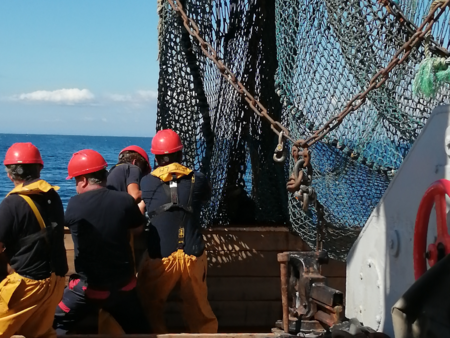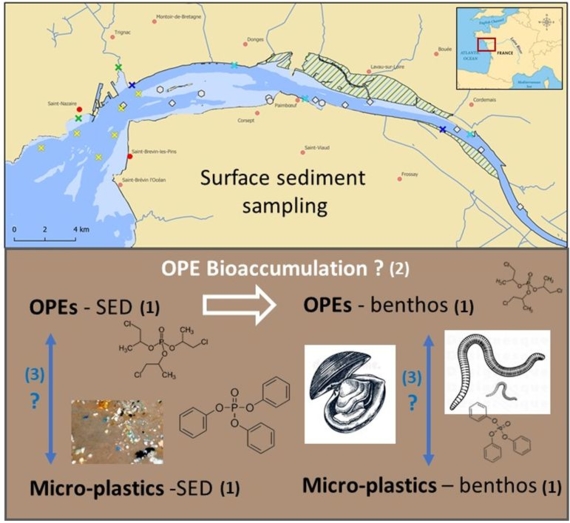EXPLOPE (2021-2023)
Exploring the environmental occurrence and links between organophosphate esters additives and micro-plastics in sediments and benthic organisms from the Loire estuary
Coordination Ifremer | Type de projet | Financeur | Durée du projet | Lien |
National | Ifremer DS (Politique de Site) | 2021-2023 |
Organophosphate ester (OPE) flame retardants and plasticizers are organic plastic additives and contaminants of emerging concern. Due to their physical-chemical properties, most OPEs exhibit a strong tendency to bind with carbon-rich suspended particulate matter, accumulating in sediments. Marine sediments are also final repositories of micro-plastics (MPs). Determining the environmental occurrence in sediments of both MPs and their additives thus becomes crucial to better understand their current stocks, potential transfer to benthic communities, and possible impacts on the global functioning of marine ecosystems. The Loire estuary represents an ecosystem of high ecological value as well as an ocean/land interface for sea trade and associated industrial activities. Despite the presence of major cities and other potential sources in the catchment area, the presence of MPs is poorly documented in the area, and no data on the occurrence and environmental levels of OPEs is available in the Loire estuary sediments and/or benthos.
The main objectives of the project EXPLOPE are:
- to determine the current concentrations of OPEs and micro-plastics (MPs) in sediments and benthic organisms from the estuary;
- to investigate the OPE bioaccumulation (transfer sediment-benthos);
- to explore the links between MPs abundance and OPE concentrations in both compartments.
Personnels Ifremer | Les partenaires |
CCEM : Y. Aminot, C. Pollono, N. Bely, B. Idjaton | Université Gustave Eiffel : J. Gasperi |
Résultats :
More than 100 samples have been gathered in two sampling campaigns, conducted in September 2021 and February 2022. Surface sediments and the bivalve Scrobicularia plana were collected in four intertidal zones subjected to different anthropogenic pressures:
- Higher median concentrations of MPs (3387 items/kg dw), ∑13tri-OPEs (12.0 ng/g dw) and ∑4di-OPEs (0.7 ng/g dw) were measured in intertidal sediments with predominance of fine particles, and under higher anthropogenic pressures, with a general lack of seasonality.
- Contrarily, Scrobicularia plana showed up to 4-fold higher ∑tri-OPE concentrations in summer (reaching 37.0 ng/g dw), and similar spatial distribution.
- Polyethylene microparticles predominated in both compartments.
- Tris (2-ethylhexyl) phosphate (TEHP), its degradation metabolite (BEHP) and tris-(2-chloro, 1-methylethyl) phosphate (TCIPP) were the most abundant OPEs in sediments, while TCIPP predominated in S. plana.
- The biota-sediment accumulation factors (BSAFs) suggest bioaccumulation potential for chlorinated-OPEs, with higher exposure in summer.
- No significant correlations were generally found between OPEs and MPs in sediments suggesting a limited role of MPs as in-situ source of OPEs
- No clear evidence of a significant role of tri-OPEs as environmental source of di-OPEs in estuarine sediments was found.
This study has been published (open access) in Marine Pollution Bulletin and the paper can be downloaded here: https://doi.org/10.1016/j.marpolbul.2024.116256
Selected results have also been presented in the international area at the SETAC Europe 32nd conference (May 2022) and at National level at the GDR Polymères & Océans 3rth Annual Meeting (June 2022). This project allowed the training of the Master Student Babatounde Tohïd Idjaton, who later enrolled in a PhD program at BRGM.



